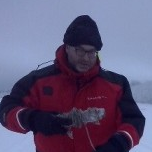Research on Nutrient Dynamics in Surface Water Using Water Quality Models and State-of-the-Art Monitoring
A special issue of Water (ISSN 2073-4441). This special issue belongs to the section "Water Quality and Contamination".
Deadline for manuscript submissions: 20 June 2024 | Viewed by 3587
Special Issue Editors
Interests: surface water quality modelling; CE-QUAL-W2; limnology; water security
Interests: surface water quality modelling; ice-jam flood hazard mapping; ice-jam flood risk assessment; remote sensing of river ice covers; river ice hydraulic modelling
Special Issues, Collections and Topics in MDPI journals
Special Issue Information
Dear Colleagues,
Nutrient processes are intrinsically connected to the global health of freshwater and coastal marine environments. Water quality models are increasingly being used as research tools for understanding complex nutrient dynamics in surface water bodies. Models can approximate processes that cannot be directly measured and inform future planning through scenarios of environmental change. Water quality models are increasingly coupled with hydrological models and can assess large-scale climate and operational management impacts on nutrient transport from catchment areas to oceans. Supporting these models are new advancements in data collection and innovative modelling tools. Sensor-based monitoring systems (such as deployable lakes and ocean buoys) provide the opportunity to observe nutrient transformations during short timescales or in real-time. New modules and subroutines are expanding the capabilities of packaged water-quality models to study in-depth nutrient processes (such as sediment diagenesis). New integrated methods of monitoring, analysis, and modelling will continue to advance our knowledge of nutrient processes, and, in this context, we invite you to submit a contribution to this Special Issue entitled “Research on Nutrient Dynamics in Surface Water Using Water Quality Models and State-of-the-Art Monitoring”.
Dr. Julie Terry
Prof. Dr. Karl-Erich Lindenschmidt
Guest Editors
Manuscript Submission Information
Manuscripts should be submitted online at www.mdpi.com by registering and logging in to this website. Once you are registered, click here to go to the submission form. Manuscripts can be submitted until the deadline. All submissions that pass pre-check are peer-reviewed. Accepted papers will be published continuously in the journal (as soon as accepted) and will be listed together on the special issue website. Research articles, review articles as well as short communications are invited. For planned papers, a title and short abstract (about 100 words) can be sent to the Editorial Office for announcement on this website.
Submitted manuscripts should not have been published previously, nor be under consideration for publication elsewhere (except conference proceedings papers). All manuscripts are thoroughly refereed through a single-blind peer-review process. A guide for authors and other relevant information for submission of manuscripts is available on the Instructions for Authors page. Water is an international peer-reviewed open access semimonthly journal published by MDPI.
Please visit the Instructions for Authors page before submitting a manuscript. The Article Processing Charge (APC) for publication in this open access journal is 2600 CHF (Swiss Francs). Submitted papers should be well formatted and use good English. Authors may use MDPI's English editing service prior to publication or during author revisions.
Keywords
- water quality modelling
- surface water modelling
- nutrient dynamics
- water quality monitoring
- eutrophication
- buoys
- lakes
- rivers
- estuaries
- ocean






